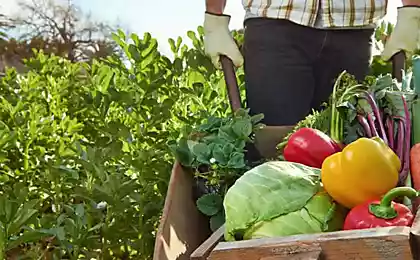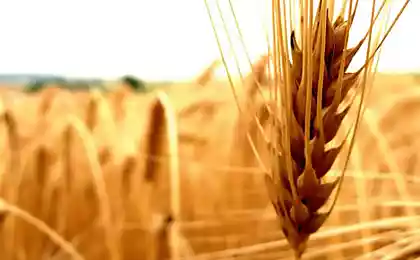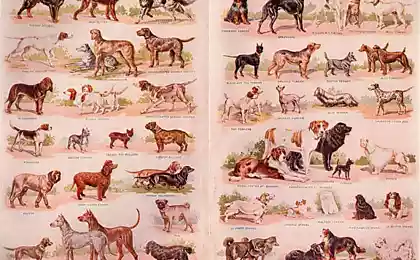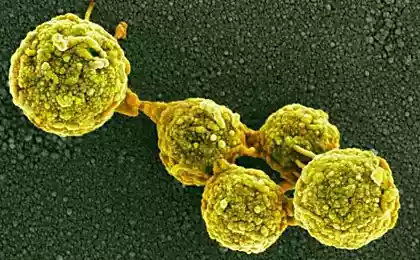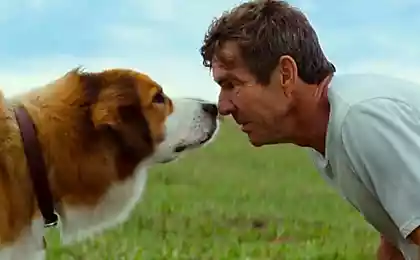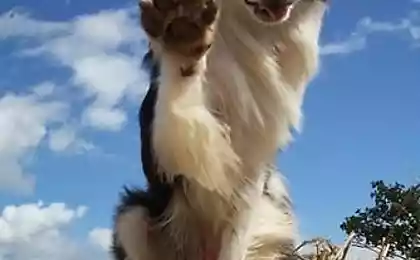364
Unique fruit breeds of Adyghe gardens
Most of the studied Adyghe varieties of fruit breeds are characterized by exceptional adaptation to local soil and climatic conditions, great durability, powerful growth and good health, amazing resistance against many diseases and pests and unusually high yield. Their fruits are distinguished by good and mediocre taste, excellent keeping and transportability.
Consider the individual elements that together constitute the qualitative characteristic of most Adyghe varieties of fruit breeds.
Durability.
The question of the durability of a fruit tree is one of the important criteria in assessing the merits of a particular variety. Repeatedly there were individual specimens of sweet chestnut at the age of 250-300 years, walnut - 150-200 years, pear varieties of Khutema (Cherkessian Bergamot), Bjihakuzh (Cherkessian winter) and others - 100-150 years, apple varieties of Aguemi (Cherkess rosemary) - 90-120 years, varieties of Myceba (Cherkess sour), Alme (Cherkessian long), Mycesen (Cherkes winter) and some more sweet food in 80 years.
Chestnut (Castanea sativa) at the age of 250-300 years.
These fruit gardens for 80-90 years did not receive any care; most of them were overgrown with forest and stalled, however, some of the gardens have survived to this day and amazes with the giant growth of trees, health, freshness and still bears fruit. The durability of Adyghe varieties of fruit breeds is indicated, for example, by this fact. In the late XIX - early XX century in the Black Sea areas were laid gardens. The latter in varietal terms were a mixture of Adyghe and European varieties. So, in 1900, at the Sochi experimental station, a collection fruit garden was laid; it also included Adyghe varieties of apple trees: Hakoshomiy (Mamaysk red), Mychezen (Circassian sweet) and Alme (Cherkessian long). From the collection garden, with the exception of Adyghe and some Abkhazian varieties, only stumps and several dry-topped trees remained. Adyghe varieties of apple trees were preserved fresh, healthy and abundantly fruiting. Similar phenomena are observed in all Black Sea gardens. The life of ordinary gardens of seed species (apples and pears), laid by seedlings of European varieties, in the conditions of the Krasnodar Territory barely reaches 50-60 years, i.e. the duration of fruiting them compared to the gardens laid by seedlings of Adyghe varieties, is about twice as short. The long duration of fruiting is
one of the great economic advantages of Adyghe varieties of fruit breeds.
Growth.
Trees and bushes of Adyghe varieties of fruit plants are distinguished by powerful growth. Individual specimens of walnut and sweet chestnut reach a height of 30-35 m From seed pears are distinguished by a strong growth of pears, especially the Khutema variety (Circassian Bergamot), reaching 20-25 m height. Apple trees are also quite powerful.
Their height ranges from 10 to 16 m. In general, all trees and bushes of Adyghe varieties of fruit plants (plums, hazelnuts, quinces, persimmons, figs, etc.), as a rule, are distinguished by powerful growth.
This property - powerful growth - some experts refer to the big drawbacks: it is difficult to harvest from tall trees, pruning these trees and work to combat diseases and pests is complicated.
This is true, but we must not forget that the trees that usually grow in our gardens (meaning their growth and power) are not able to give and retain a crop of 1000-1700 kg.
The powerful growth of trees and bushes of Adyghe varieties of fruit breeds is organically interrelated with their high yield.
Persimmon.
It should be emphasized that in the crowns of tall and powerful trees, other things being equal, there is a more favorable air-light regime. Such conditions, together with other positive factors, contribute to improving the quality of fruits, increasing the yield and at the same time are an unfavorable environment for pests and diseases. Each farm is quite able to provide fruit gardens with sliding light and durable stairs, sprayers and pollinators, cutters, fruit pickers and other tools. In addition, with the help of various pruning techniques, you can gradually influence the growth and fruiting of Adyghe varieties in the desired direction. It is only necessary to develop post-pruning and then produce it in production conditions.
Resistance against agricultural pests and diseases.
As already noted, Adyghe varieties of fruit breeds are resistant to agricultural pests and diseases. In the Adyghe gardens, treatment has never been used - spraying or pollination with toxic chemicals. Yet trees, shoots,
Their leaves and fruits are almost always healthy and clean. In the apple orchards of the Black Sea coast, one can often observe how in mixed plantations the fruits of cultivated varieties of apple trees, for example, Renet Simirenko, Renet champagne, fall ill with scab to such an extent that they turn into ugly, depreciated fruits - marriage.
Fig tree Aul B. Kichmay of Lazarev district
At the same time here, near, on the trees of Aguemiy (Circassian rosemary), Psebashkhamiy (Circassian sweet synap), Mychesen (Circassian sweet) fruits are perfectly healthy. Varieties of hazelnuts, quinces, forms of walnut and sweet chestnut, despite the fact that they are almost not treated, practically give healthy, intact fruits. Our long-term observations allow us to say that Adyghe apple varieties are very resistant to blood aphids (Eriosoma lnigerum Hausm.), which in the Black Sea regions is a scourge of gardening. On this occasion, Y. G. Mozgovoy writes: “Circassian varieties, both seedlings and vaccinations, are exceptionally resistant to fungal diseases, and on the basis of our surveys of Circassian varieties on blood aphids, we can add that some of them are resistant to the latter.” Almond semeater (Eurytoma amigdali End.) in the conditions of the Black Sea coast is one of the dangerous pests that cause enormous damage to plum orchards. Adyghe plum varieties are quite resistant against this pest. It cannot be said that Adyghe varieties of fruit plants are completely undamaged by diseases and pests, but in local conditions they are the most stable. The main factors that determine the stability of Adyghe varieties of fruit plants are their local origin and the influence of vegetative hybridization (Adyghe varieties of seed breeds, as well as their seedlings, multiplied by grafting cuttings on local wild fruit trees). Adyghe varieties of fruit plants fell out of sight of specialists-scientists working in the field of plant protection. Meanwhile, for phytopathologists and entomologists, they are of great scientific interest and should serve as an object for the deployment of great research work.
Yields.
One of the characteristic features of the vast majority of Adyghe varieties of fruit breeds is their exceptionally high yield. Here are some examples. Varieties of apple tree Aguemiy (Circassian rosemary), Mychezen (Circassian sweet), Hakoshomiy (Mamai red) yield an average of one full-age tree from 400 to 800 kg. The average yields from one tree of standard varieties of apple trees in the advanced fruit farms of the Krasnodar Territory range from 160 to 180 kg. And in Arkhipo-Osipovka, Gelendzhik district (according to the experiencer-gardener Avilov), in homogeneous conditions, the following crop of apple varieties was rayed (for five years, on average in kilograms from a tree):
Blossoming pear tree varieties Hutema Aul Agui Tuapse district
Of all the Adyghe pear varieties, the Khutema variety (Cherkess Bergamot) is unusually high in yield. The average harvest from a tree ranges from 500 to 1,000 kg, but there are often cases when harvests of 1.500-1.700 kg are removed from freestanding powerful hundred-year-old trees. So, V. I. Shikhmatov writes that from a hundred-year-old powerful tree of the Cherkessky bergamot variety on the estate of the Maikop experimental station VIR harvested: in 1946 – 1,700 kg, in 1948 – 1,350 kg and in 1950 – 1,600 kg. Such high-yielding trees are found in the gardens of Tuapse, Lazarevsky and other areas of the Krasnodar Territory. Average harvests from wood (standard varieties of pears) on state farms of the Krasnodar Territory in 1952 ranged from 70 to 120 kg, and on collective farms were much lower. ...
Varieties of hazelnuts in terms of yield occupy the first place among all other varieties grown in the Krasnodar Territory. So, from one full-age bush of Cherkessky II varieties harvest from 10 to 12 kg. With high agricultural technology, the harvest of individual bushes reaches 18-20 kg. It should be emphasized that all these data on the yield of Adyghe varieties of fruit breeds, with the exception of hazelnuts, refer to neglected gardens, where the trunk circles were not processed (drained), the soil was not fertilized, work was not carried out to combat agricultural pests and diseases. If these gardens are organized elementary care, the average yields will increase two to three times. Convincing confirmation of this can serve as the results of many years of work of the famous gardener-experienced kolkhoz "Banner of Communism", Lazarevsky district, Tlifa Sh. E. On the experimental site of the culture of hazelnuts of Cherkessky II Tlif used high gardening - he processed pistol circles, introduced organo-mineral fertilizers, fought against agricultural pests and diseases,
He removed the root in a timely manner, pruned for thinning. As a result, the average yield on the Tlifa plot for 11 years amounted to 21.38 centners per hectare, and in the collective farm garden only 6.54 centners. ...
The taste of the fruit.
As far as is known, the fruits of the Adyghe varieties of fruit breeds, with the exception of the Aguemy apple variety (Cherkess rosemary) and the Cherkesssky II hazelnut variety, have never been officially tasted. Nevertheless, some experts in the past indiscriminately claimed that the fruits of the Adyghe varieties of fruit plants have low taste advantages, and therefore did not include them in the lists of industrial varieties of the Black Sea and foothill areas of the Krasnodar Territory. This approach hastened the loss of many valuable Adyghe varieties of fruit plants. Underestimation of the taste advantages of the fruits of Adyghe varieties of fruit plants can be explained, firstly, by ignorance, ignorance of the qualities of the fruits. Secondly, the fact that the taste assessment of winter varieties was carried out when tasting fruits that have not yet settled enough, since their consumer maturity comes late - in December. For example, the fruits of apple varieties Aguemiy (Rozmarin Circassian) and Psebashkhamiy (Synap Circassian sweet) when tasting them in November received (according to a five-point system) an assessment: the first - 3.4, and the second - 3; when tasting the fruits of these varieties in March, the assessment for the first variety was 4.5, and for the second grade 4 points. The fruits of Adyghe pear varieties were tasted in an overripe state, which naturally reduced their assessment. In order to objectively assess the taste of the fruits of the Adyghe varieties of apple, pear, plum, hazelnut and forms of walnut, we subjected them to organoleptic evaluation through tasting commissions with the participation of a large number of highly qualified scientists, specialists, representatives of land bodies and production (sovkhozes and collective farms). (See table 1).
In addition to the varieties given in Table 2, the fruits of all varieties of hazelnut, quince, most varieties of grapes, many forms of walnut and sweet chestnut also have good taste advantages. However, it should be noted that due to the prolonged stay of the Adyghe gardens without any care, the taste of the fruits of many varieties of apple, pear, plum, cherries, grapes, walnuts have deteriorated significantly. . .
In the Adyghe gardens, fruit plants with sour fruits were also occasionally encountered - a variety of Myceba apple tree (Circassian sour), which has survived to this day. Fruits of this variety, completely unsuitable for use in autumn, after winter sloshing - in spring become refreshing, sour-sweet.
Fruit lightness.
The fruits of all Adyghe varieties of apple trees are distinguished by excellent tidyness; for example, the fruits of Aguemi, Mychezen, Psebashhamiy, Hakoshomiy are stored until a new harvest. The fruits of most varieties of pears do not differ in sturdyness, they are usually processed (in general form) for dried fruits. Dried fruits are stored 1-2 years. A small part of the pear fruit is used for eating fresh (at consumer maturity). The fruits of some winter varieties of pears are distinguished by their stiffness; their consumer maturity usually occurs after the first frosts, for example, in the Bjihakuzh variety (Winter Circassian). The fruits of the Adyghe plum varieties, like all other plum varieties, are not neat and are used for drying and partly for eating fresh.
The fruits of all varieties of hazelnuts and forms of walnut and sweet chestnut are exceptionally tidy and can be stored for 2-3 years.
Fruit transportability.
The fruits of all Adyghe varieties of apple, hazelnut, walnut, sweet chestnut are exceptionally high transportability.
The qualitative characteristics of the Adyghe varieties of fruit plants allow us to draw the following conclusions:
Source: /users/1077
Consider the individual elements that together constitute the qualitative characteristic of most Adyghe varieties of fruit breeds.
Durability.
The question of the durability of a fruit tree is one of the important criteria in assessing the merits of a particular variety. Repeatedly there were individual specimens of sweet chestnut at the age of 250-300 years, walnut - 150-200 years, pear varieties of Khutema (Cherkessian Bergamot), Bjihakuzh (Cherkessian winter) and others - 100-150 years, apple varieties of Aguemi (Cherkess rosemary) - 90-120 years, varieties of Myceba (Cherkess sour), Alme (Cherkessian long), Mycesen (Cherkes winter) and some more sweet food in 80 years.
Chestnut (Castanea sativa) at the age of 250-300 years.
These fruit gardens for 80-90 years did not receive any care; most of them were overgrown with forest and stalled, however, some of the gardens have survived to this day and amazes with the giant growth of trees, health, freshness and still bears fruit. The durability of Adyghe varieties of fruit breeds is indicated, for example, by this fact. In the late XIX - early XX century in the Black Sea areas were laid gardens. The latter in varietal terms were a mixture of Adyghe and European varieties. So, in 1900, at the Sochi experimental station, a collection fruit garden was laid; it also included Adyghe varieties of apple trees: Hakoshomiy (Mamaysk red), Mychezen (Circassian sweet) and Alme (Cherkessian long). From the collection garden, with the exception of Adyghe and some Abkhazian varieties, only stumps and several dry-topped trees remained. Adyghe varieties of apple trees were preserved fresh, healthy and abundantly fruiting. Similar phenomena are observed in all Black Sea gardens. The life of ordinary gardens of seed species (apples and pears), laid by seedlings of European varieties, in the conditions of the Krasnodar Territory barely reaches 50-60 years, i.e. the duration of fruiting them compared to the gardens laid by seedlings of Adyghe varieties, is about twice as short. The long duration of fruiting is
one of the great economic advantages of Adyghe varieties of fruit breeds.
Growth.
Trees and bushes of Adyghe varieties of fruit plants are distinguished by powerful growth. Individual specimens of walnut and sweet chestnut reach a height of 30-35 m From seed pears are distinguished by a strong growth of pears, especially the Khutema variety (Circassian Bergamot), reaching 20-25 m height. Apple trees are also quite powerful.
Their height ranges from 10 to 16 m. In general, all trees and bushes of Adyghe varieties of fruit plants (plums, hazelnuts, quinces, persimmons, figs, etc.), as a rule, are distinguished by powerful growth.
This property - powerful growth - some experts refer to the big drawbacks: it is difficult to harvest from tall trees, pruning these trees and work to combat diseases and pests is complicated.
This is true, but we must not forget that the trees that usually grow in our gardens (meaning their growth and power) are not able to give and retain a crop of 1000-1700 kg.
The powerful growth of trees and bushes of Adyghe varieties of fruit breeds is organically interrelated with their high yield.
Persimmon.
It should be emphasized that in the crowns of tall and powerful trees, other things being equal, there is a more favorable air-light regime. Such conditions, together with other positive factors, contribute to improving the quality of fruits, increasing the yield and at the same time are an unfavorable environment for pests and diseases. Each farm is quite able to provide fruit gardens with sliding light and durable stairs, sprayers and pollinators, cutters, fruit pickers and other tools. In addition, with the help of various pruning techniques, you can gradually influence the growth and fruiting of Adyghe varieties in the desired direction. It is only necessary to develop post-pruning and then produce it in production conditions.
Resistance against agricultural pests and diseases.
As already noted, Adyghe varieties of fruit breeds are resistant to agricultural pests and diseases. In the Adyghe gardens, treatment has never been used - spraying or pollination with toxic chemicals. Yet trees, shoots,
Their leaves and fruits are almost always healthy and clean. In the apple orchards of the Black Sea coast, one can often observe how in mixed plantations the fruits of cultivated varieties of apple trees, for example, Renet Simirenko, Renet champagne, fall ill with scab to such an extent that they turn into ugly, depreciated fruits - marriage.
Fig tree Aul B. Kichmay of Lazarev district
At the same time here, near, on the trees of Aguemiy (Circassian rosemary), Psebashkhamiy (Circassian sweet synap), Mychesen (Circassian sweet) fruits are perfectly healthy. Varieties of hazelnuts, quinces, forms of walnut and sweet chestnut, despite the fact that they are almost not treated, practically give healthy, intact fruits. Our long-term observations allow us to say that Adyghe apple varieties are very resistant to blood aphids (Eriosoma lnigerum Hausm.), which in the Black Sea regions is a scourge of gardening. On this occasion, Y. G. Mozgovoy writes: “Circassian varieties, both seedlings and vaccinations, are exceptionally resistant to fungal diseases, and on the basis of our surveys of Circassian varieties on blood aphids, we can add that some of them are resistant to the latter.” Almond semeater (Eurytoma amigdali End.) in the conditions of the Black Sea coast is one of the dangerous pests that cause enormous damage to plum orchards. Adyghe plum varieties are quite resistant against this pest. It cannot be said that Adyghe varieties of fruit plants are completely undamaged by diseases and pests, but in local conditions they are the most stable. The main factors that determine the stability of Adyghe varieties of fruit plants are their local origin and the influence of vegetative hybridization (Adyghe varieties of seed breeds, as well as their seedlings, multiplied by grafting cuttings on local wild fruit trees). Adyghe varieties of fruit plants fell out of sight of specialists-scientists working in the field of plant protection. Meanwhile, for phytopathologists and entomologists, they are of great scientific interest and should serve as an object for the deployment of great research work.
Yields.
One of the characteristic features of the vast majority of Adyghe varieties of fruit breeds is their exceptionally high yield. Here are some examples. Varieties of apple tree Aguemiy (Circassian rosemary), Mychezen (Circassian sweet), Hakoshomiy (Mamai red) yield an average of one full-age tree from 400 to 800 kg. The average yields from one tree of standard varieties of apple trees in the advanced fruit farms of the Krasnodar Territory range from 160 to 180 kg. And in Arkhipo-Osipovka, Gelendzhik district (according to the experiencer-gardener Avilov), in homogeneous conditions, the following crop of apple varieties was rayed (for five years, on average in kilograms from a tree):
- Aguemiy (Rozmarin Circassian) – 463,
- Renette Champagne - 243,
- Rosemary white - 93,
- Renet Simirenko is 87.
Blossoming pear tree varieties Hutema Aul Agui Tuapse district
Of all the Adyghe pear varieties, the Khutema variety (Cherkess Bergamot) is unusually high in yield. The average harvest from a tree ranges from 500 to 1,000 kg, but there are often cases when harvests of 1.500-1.700 kg are removed from freestanding powerful hundred-year-old trees. So, V. I. Shikhmatov writes that from a hundred-year-old powerful tree of the Cherkessky bergamot variety on the estate of the Maikop experimental station VIR harvested: in 1946 – 1,700 kg, in 1948 – 1,350 kg and in 1950 – 1,600 kg. Such high-yielding trees are found in the gardens of Tuapse, Lazarevsky and other areas of the Krasnodar Territory. Average harvests from wood (standard varieties of pears) on state farms of the Krasnodar Territory in 1952 ranged from 70 to 120 kg, and on collective farms were much lower. ...
Varieties of hazelnuts in terms of yield occupy the first place among all other varieties grown in the Krasnodar Territory. So, from one full-age bush of Cherkessky II varieties harvest from 10 to 12 kg. With high agricultural technology, the harvest of individual bushes reaches 18-20 kg. It should be emphasized that all these data on the yield of Adyghe varieties of fruit breeds, with the exception of hazelnuts, refer to neglected gardens, where the trunk circles were not processed (drained), the soil was not fertilized, work was not carried out to combat agricultural pests and diseases. If these gardens are organized elementary care, the average yields will increase two to three times. Convincing confirmation of this can serve as the results of many years of work of the famous gardener-experienced kolkhoz "Banner of Communism", Lazarevsky district, Tlifa Sh. E. On the experimental site of the culture of hazelnuts of Cherkessky II Tlif used high gardening - he processed pistol circles, introduced organo-mineral fertilizers, fought against agricultural pests and diseases,
He removed the root in a timely manner, pruned for thinning. As a result, the average yield on the Tlifa plot for 11 years amounted to 21.38 centners per hectare, and in the collective farm garden only 6.54 centners. ...
The taste of the fruit.
As far as is known, the fruits of the Adyghe varieties of fruit breeds, with the exception of the Aguemy apple variety (Cherkess rosemary) and the Cherkesssky II hazelnut variety, have never been officially tasted. Nevertheless, some experts in the past indiscriminately claimed that the fruits of the Adyghe varieties of fruit plants have low taste advantages, and therefore did not include them in the lists of industrial varieties of the Black Sea and foothill areas of the Krasnodar Territory. This approach hastened the loss of many valuable Adyghe varieties of fruit plants. Underestimation of the taste advantages of the fruits of Adyghe varieties of fruit plants can be explained, firstly, by ignorance, ignorance of the qualities of the fruits. Secondly, the fact that the taste assessment of winter varieties was carried out when tasting fruits that have not yet settled enough, since their consumer maturity comes late - in December. For example, the fruits of apple varieties Aguemiy (Rozmarin Circassian) and Psebashkhamiy (Synap Circassian sweet) when tasting them in November received (according to a five-point system) an assessment: the first - 3.4, and the second - 3; when tasting the fruits of these varieties in March, the assessment for the first variety was 4.5, and for the second grade 4 points. The fruits of Adyghe pear varieties were tasted in an overripe state, which naturally reduced their assessment. In order to objectively assess the taste of the fruits of the Adyghe varieties of apple, pear, plum, hazelnut and forms of walnut, we subjected them to organoleptic evaluation through tasting commissions with the participation of a large number of highly qualified scientists, specialists, representatives of land bodies and production (sovkhozes and collective farms). (See table 1).
In addition to the varieties given in Table 2, the fruits of all varieties of hazelnut, quince, most varieties of grapes, many forms of walnut and sweet chestnut also have good taste advantages. However, it should be noted that due to the prolonged stay of the Adyghe gardens without any care, the taste of the fruits of many varieties of apple, pear, plum, cherries, grapes, walnuts have deteriorated significantly. . .
In the Adyghe gardens, fruit plants with sour fruits were also occasionally encountered - a variety of Myceba apple tree (Circassian sour), which has survived to this day. Fruits of this variety, completely unsuitable for use in autumn, after winter sloshing - in spring become refreshing, sour-sweet.
Fruit lightness.
The fruits of all Adyghe varieties of apple trees are distinguished by excellent tidyness; for example, the fruits of Aguemi, Mychezen, Psebashhamiy, Hakoshomiy are stored until a new harvest. The fruits of most varieties of pears do not differ in sturdyness, they are usually processed (in general form) for dried fruits. Dried fruits are stored 1-2 years. A small part of the pear fruit is used for eating fresh (at consumer maturity). The fruits of some winter varieties of pears are distinguished by their stiffness; their consumer maturity usually occurs after the first frosts, for example, in the Bjihakuzh variety (Winter Circassian). The fruits of the Adyghe plum varieties, like all other plum varieties, are not neat and are used for drying and partly for eating fresh.
The fruits of all varieties of hazelnuts and forms of walnut and sweet chestnut are exceptionally tidy and can be stored for 2-3 years.
Fruit transportability.
The fruits of all Adyghe varieties of apple, hazelnut, walnut, sweet chestnut are exceptionally high transportability.
The qualitative characteristics of the Adyghe varieties of fruit plants allow us to draw the following conclusions:
- Part of the Adyghe varieties of apple, pear, quince, plum, hazelnut, forms of walnut and sweet chestnut in their biological, economic, production and chemical and technological characteristics and taste of fruits meets modern requirements for standard varieties of fruit breeds.
- In the Caucasus, these varieties should be widely introduced into production.
- Adyghe varieties are the most valuable initial breeding material for the enrichment of the fruit assortment of the Soviet Union (Caucasus, Crimea, Ukraine and other republics and regions).
- In the former Adyghe gardens, there are some varieties with valuable biological characteristics, but due to the lack of care for them, many of these varieties have worsened the taste of the fruits.
Source: /users/1077

